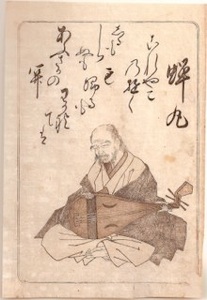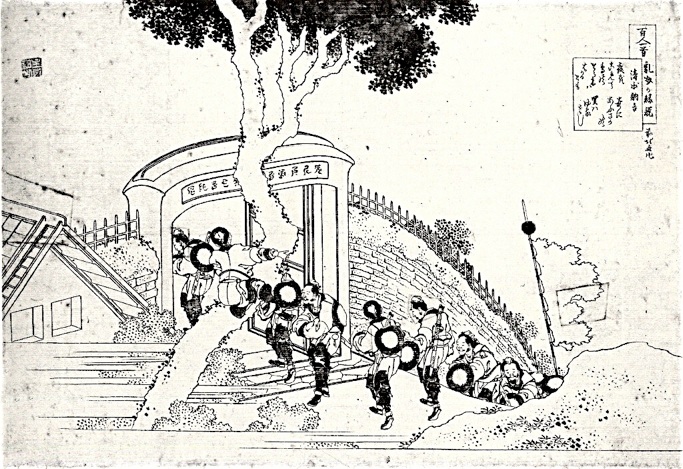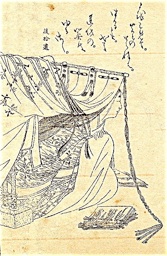清少納言


夜をこめて
鳥の空音は
はかるとも
よに逢坂の
関はゆるさじ
せいしょうなごん
よおこめて
とりのそらねは
はかるとも
よにおうさかの
せきはゆるさじ
Lady Sei Shonagon
In the full of night
The mimicked cock’s crow
Will fool anyone,
But at Ousaka Gate
They never let off.
Hokusai
Sei Shonagon (c.966 - 1017) was a court lady who served empress Teishi (or Sadako) around the year 1000, and is best known as the author of The Pillow Book, which relates events at the court and includes stories about several authors in this anthology. Her real name might have been Kiyohara Nagiko. She was the daughter of Kiyohara no Motosuke (poem 42). She married Tachibana Norimitsu at the age of 16, and gave birth to one son. Afterwards, she remarried to Fujiwara-Muneyo, and gave birth to a daughter. At age 27, when she began to serve empress Teishi, consort of emperor Ichijo, she was supposedly divorced. She was fascinated by the young and beautiful empress, a teenager when they met. Although only four poems exist by her, she belongs to the Thirty-Six Immortal Poets.



The Pillow Book has the anecdote connected to this poem:
“One evening Yukinari, the Controller First Secretary, came to the Empress’s Office and stayed there talking until late at night.
‘Tomorrow is a day of Imperial Abstinence,’ he said as he left, ‘and I have to remain in the Palace. I must certainly go home before the Hour of the Ox.’
On the following morning a messenger brought me several sheets of Koya paper of the type the Chamberlains use in the Emperor’s Private Office. ‘Today,’ I read, ‘my heart is full of memories of our meeting. I had hoped that I might stay until the morning telling you of bygone days, but the cock’s crow forced me to take my leave...’ It was a long letter, very elegantly written and contrived to give an impression that was quite contrary to the truth. I was much impressed and replied, ‘Can the cock’s crow that we heard so late at night be that which saved the Lord of Meng-ch’ang?’ Yukinari answered, ‘It is said that the cock’s crow opened the barrier of Han Ku and allowed the Lord of Meng-ch’ang to escape in the nick of time with his three thousand followers. But we are concerned with a far less distant barrier - the Barrier of Ousaka.’ I then sent him this poem.
...
And as a postscript: ‘I am told that the gate-keeper is a very shrewd man.’
Yukinari promptly replied:
I have heard it said
That Ousaka’s Barrier can be freely crossed.
No need here for the cock to crow:
This gate is ever opened wide,
And waits each wanderer who comes.”

Sei Shonagon by Yosai
The site of the gate now.
Notice the similarity with the Hokusai drawing.

Hokusai depicts the scene of the same Chinese story referred to in The Pillow Book. A man is climbing down a tree and soldiers file through the gate after it was opened.
See also poems 10 and 25 for Ousaka Gate.
